Accepted Scientific Name: Austrocylindropuntia pachypus (K.Schum.) Backeb.
Cactaceae (Berlin) Jahrb. Deutsch. Kakt.-Ges. 1941, Pt. 2, 13 (1942); cf. Gray Herb.Card Cat.
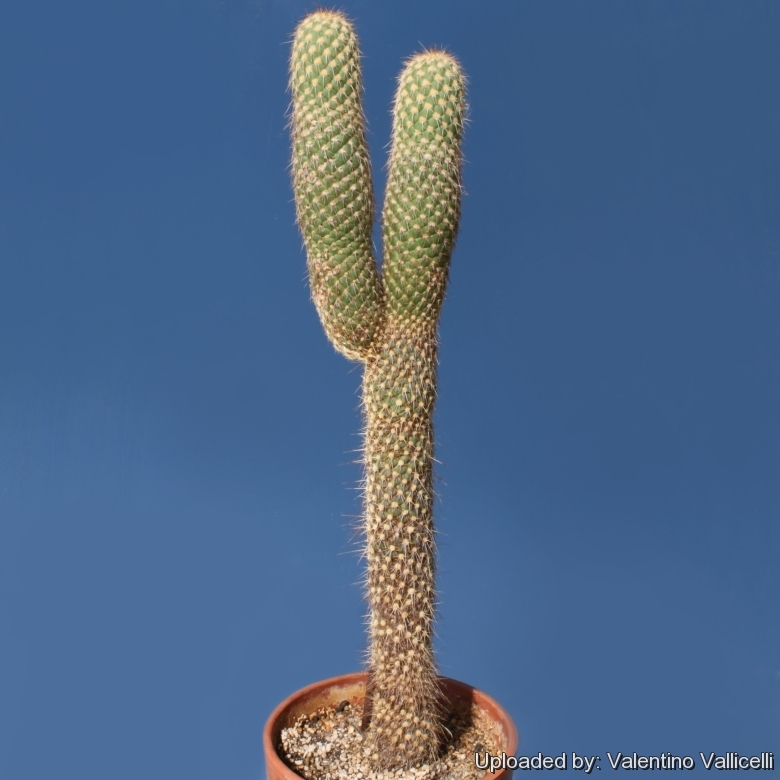
Cylindropuntia pachypus (Austrocylindropuntia pachypus) Photo by: Valentino Vallicelli
Origin and Habitat: Austrocylindropuntia pachypusSN|4183]]SN|4183]] is endemic to Central Peru, near the coast and found in the regions of Ancash (northern limit: valle del Río Casma) and Lima (southern limit) in valle del Río Rimac. This species is not abundant where it occurs and is patchily distributed. Type locality: Near Santa Clara, Peru.
Altitude range: From 600 to 2,500 metres above sea level.
Habitat and Ecology: This cactus only occurs on rocky slopes in matorral (shrubby) vegetation together with, Haageocereus acranthusSN|5512]]SN|5512]], Pseudoespostoa melanosteleSN|5680]]SN|5680]], Armatocereus arboreusSN|4793]]SN|4793]], and Matucana hayneiSN|1080]]SN|1080]]. It does not have a continuous distribution, as it is only present in valleys. The species is affected by human sprawl and agricultural farming activities.
Synonyms:
See all synonyms of Austrocylindropuntia pachypus
back
Accepted name in llifle Database:Austrocylindropuntia pachypus (K.Schum.) Backeb.Cactaceae (Berlin) Jahrb. Deutsch. Kakt.-Ges. 1941, Pt. 2, 13 (1942); cf. Gray Herb.Card Cat.Synonymy: 5
back
Description: AustrocylindrSN'> 4183' alt='4185'>Opuntia pachypus#SN#4185'>Austrocylindr[[Opuntia pachypusSN' style='border:none;'>SN|4183]] (Opuntia pachypusSN|4185]]SN|4185]]) is a columnar species, usually simple, sparsely or not branched basally, with few branches above, about 1 meter high (occasionally up to 3 metres), and candelabrum-like. The spiralling tubercles are slightly elevated with depressed, closely set, woolly areoles bearing numerous, rather unequal, yellowish-white spines pointing downward up to 2 cm long. AustrocylindrSN'>
4183' alt='4185'>Opuntia pachypus#SN#4185'>Austrocylindr[[Opuntia pachypusSN' style='border:none;'>SN|4183]] (Opuntia pachypusSN|4185]]SN|4185]]) is a columnar species, usually simple, sparsely or not branched basally, with few branches above, about 1 meter high (occasionally up to 3 metres), and candelabrum-like. The spiralling tubercles are slightly elevated with depressed, closely set, woolly areoles bearing numerous, rather unequal, yellowish-white spines pointing downward up to 2 cm long. AustrocylindrSN'> 4183' alt='4185'>Opuntia pachypus#SN#4185'>Austrocylindr[[Opuntia pachypusSN' style='border:none;'>SN|4183]] is seldom seen in cultivation due to its slow growth, and generally cultivated grafted.
4183' alt='4185'>Opuntia pachypus#SN#4185'>Austrocylindr[[Opuntia pachypusSN' style='border:none;'>SN|4183]] is seldom seen in cultivation due to its slow growth, and generally cultivated grafted.
Derivation of specific name: 'pachypus' Greek 'pachys', παχυϛ = "thick"; and Greek 'pous' πουϛ, ποδοϛ = "foot", for the long thickened pericarpel of the flower. K. Schumann indicated at the end of its original description that: "The length and width of the lower thick portion of the ovary (the pericarpel) is particularly remarkable."
Stems. Cylindrical, bright to dark green, 3 to 8 cm in diameter, branching from above, either straight or curved, marked with broad, numerous, spiraling, rhomboid tubercles, with spines throughout.
Areoles: Large, circular, about 4 mm in diameter, white felted, closely set, borne at the upper edges of the tubercles and somewhat sunken.
Leaves: Slender, subulate, pointed, constricted at the base, 4 mm long, early deciduous.
Spines: 20 to 30, subulate, wiry, yellowish-white becoming grey with age, of variable size up to 20 mm long, some small, very short, bent backward, (0.5 cm long). Occasionally with few longer powerful centrals up to 25 mm long, the largest spines directed downward.
Glochids: yellow.
Flowers: Rather small, diurnal, developing near the tips of the plant, bright scarlet, or dark orange, 2-4.5 cm in diameter and 7 cm long, including the ovary. Pericarpels like short branches more or less spiny. Tepals variable, the longest ones 1.4 cm. long. Style very thick, 9 mm long: Stigma-lobes 5 mm long
Blooming season: Summer. Blooms are rarely seen in cultivation.
Seeds Nearly spherical, 3.5 mm in diameter.
Fruits: Sometimes the plant produces fruits without seeds, which can then proliferate forming a chain and root as they fall to the ground.
Seeds: 3,5.
Subspecies, varieties, forms and cultivars of plants belonging to the Austrocylindropuntia pachipus group
Bibliography: Major references and further lectures
1) Ostalaza, C., Cáceres, F. & Roque, J. 2013. Austrocylindropuntia pachypus. The IUCN Red List of Threatened Species 2013: e.T151737A555860. http://dx.doi.org/10.2305/IUCN.UK.2013-1.RLTS.T151737A555860.en. Downloaded on 26 March 2016.
2) Arakaki, M., Ostolaza, C., Cáceres, F. and Roque, J. “Cactaceae endémicas del Perú.” Revista Peruana de Biología 13(2): 193s-291s. 2006
3) N. L. Britton, J. N. Rose: “The Cactaceae. Descriptions and Illustrations of Plants of the Cactus Family.” Vol I, The Carnegie Institution of Washington, Washington 1919
4) Curt Backeberg “Die Cactaceae: Handbuch der Kakteenkunde”, Volume 6 G. Fischer, 1962
5) Hunt, D., Taylor, N. and Charles, G. “The New Cactus Lexicon.” dh Books, Milborne Port, UK. 2006
6) Anderson, E. F. “The cactus family” 2001
7) Clive Innes “Complete Handbook of Cacti and Succulents” Van Nostrand Reinhold Company, 01 December 1981
8) Urs Eggli, Leonard E. Newton “Etymological Dictionary of Succulent Plant Names” Springer Science & Business Media, 29 June 2013
9) Ritter, F. “Kakteen in Südamerika”. Vol. IV. Peru 1239–1692. Friedrich Ritter Selbstverlag, Spangenberg. 1981.
10) Brako, L. & J. L. Zarucchi. “Catalogue of the flowering plants and gymnosperms of Peru.” Monogr. Syst. Bot. Missouri Bot. Gard. 45. [= Opuntia pachypus K. Schum.]. 1993.
11) Austrocylindropuntia pachypus in: “Encyclopédie: Austrocylindropuntia” by Philippe Corman Succulentopi@ N°11 - Octobre 2014 Pages 13-15. retrieved 27 March 2016 from <https://www.cactuspro.com/succulentopia/Succulentopia-N11-2014-10.pdf>
12) Gilmer K., Thomas H.P., Schulz W., “Beobachtungen an Austrocylindropuntia pachypus 13) (Opuntioideae).” Kakteen und andere Sukkulenten 56: 169-177 (2005)
14) Mackie R., "Opuntia pachypus", British Cactus and Succulent Journal, 16(1): 20 (1998), and "Opuntia pachypus, an update", British Cactus and Succulent Journal, 18(1): 43 (2000).
15) Putnam E.W., “Cactus album n°15, Opuntia pachypus”, National Cactus and Succulent Journal 30(1): 18 (1975)
16) PhD Thesis: Cristina Geiger H., “Phytochemical Study of Opuntia Pachypus,” B.S., Catholic University, Lima-Peru.
 Cylindropuntia pachypus (Austrocylindropuntia pachypus) Photo by: Valentino Vallicelli
Cylindropuntia pachypus (Austrocylindropuntia pachypus) Photo by: Valentino Vallicelli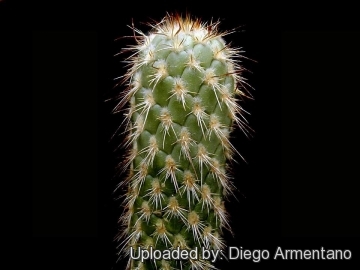 Cylindropuntia pachypus (Austrocylindropuntia pachypus) Photo by: Diego Armentano
Cylindropuntia pachypus (Austrocylindropuntia pachypus) Photo by: Diego Armentano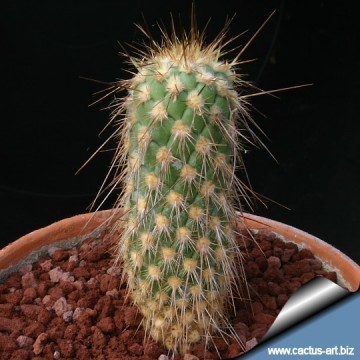 Cylindropuntia pachypus (Austrocylindropuntia pachypus) Photo by: Cactus Art
Cylindropuntia pachypus (Austrocylindropuntia pachypus) Photo by: Cactus Art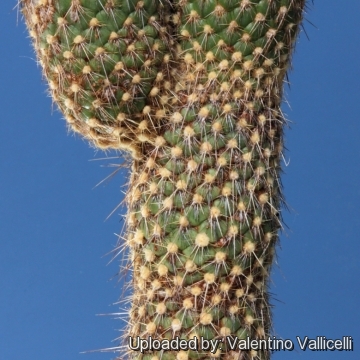 Cylindropuntia pachypus (Austrocylindropuntia pachypus) Photo by: Valentino Vallicelli
Cylindropuntia pachypus (Austrocylindropuntia pachypus) Photo by: Valentino Vallicelli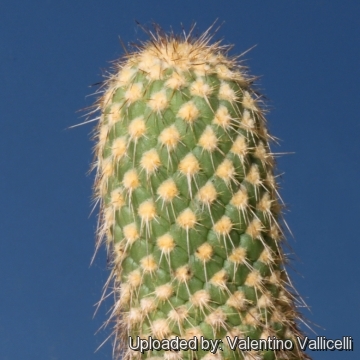 Cylindropuntia pachypus (Austrocylindropuntia pachypus) Photo by: Valentino Vallicelli
Cylindropuntia pachypus (Austrocylindropuntia pachypus) Photo by: Valentino Vallicelli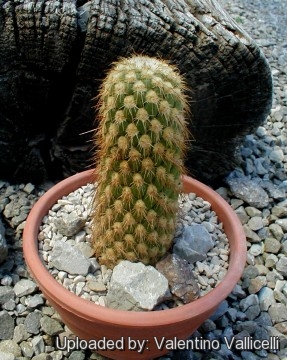 Cylindropuntia pachypus (Austrocylindropuntia pachypus) Photo by: Valentino Vallicelli
Cylindropuntia pachypus (Austrocylindropuntia pachypus) Photo by: Valentino Vallicelli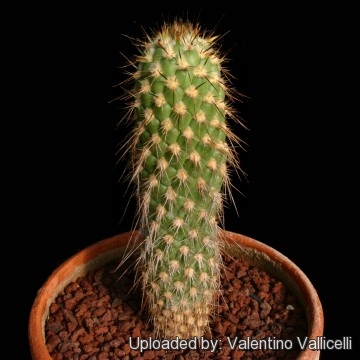 Cylindropuntia pachypus (Austrocylindropuntia pachypus) Photo by: Valentino Vallicelli
Cylindropuntia pachypus (Austrocylindropuntia pachypus) Photo by: Valentino Vallicelli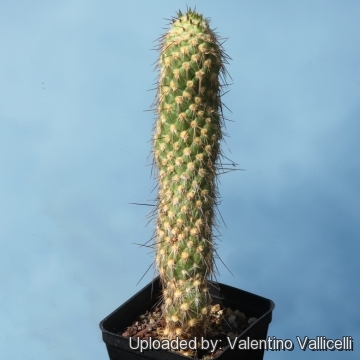 Cylindropuntia pachypus (Austrocylindropuntia pachypus) Photo by: Valentino Vallicelli
Cylindropuntia pachypus (Austrocylindropuntia pachypus) Photo by: Valentino VallicelliCultivation and Propagation: Austrocylindropuntia pachypusSN|4092]]SN|4183]] is a slow growing species, quite sensitive to moisture and difficult to propagate. Thereby it is often sold grafted.
Watering needs: It needs moderate watering during the growing season; keep dry in winter.
Soil: It requires a very drained and mineral potting mix.
Exposure: A. pachypus needs a full sun exposure.
Temperature requirements. They needs a relatively high temperature (at least 5-8 ° C depending on the rootstock).
Propagation: Seeds are seldom available and extremely difficult to germinate. It is best reproduced by cutting that frequently don't manage to produce roots or root very slowly and unpredictably. For this reason this plant is often grafted. Austrocylindropuntia subulataSN|4183]]SN|4092]] is often used as a rootstock, but not particularly recommended because too powerful and too sensitive to cold. However some new and more resistant clones are now available and ideal for a fairly easy culture, these readily take root and can be grown without great difficulties in a well-drained potting.
Your Photos
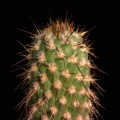
by Valentino Vallicelli



















